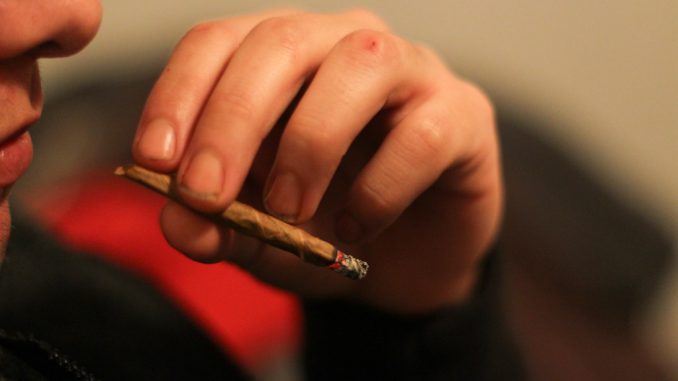
After years of research, marijuana breathalyzers may finally become a reality in 2020.
On Feb. 27, Hound Labs in California announced that they completed a successful clinical trial on the world’s first marijuana breathalyzer.
The breathalyzer can detect the smallest amount of THC, down to a trillionth of a gram per liter, and can detect THC in the breath two to three hours after inhaling.
Moving forward, the company said they will make the breathalyzer into a commercial product costing $5,000, primarily for police departments and construction companies.
Currently, if an officer suspects an erratic-behaving driver is under the influence of drugs or alcohol, the officer will then ask the driver to perform standard field sobriety tests (one leg stand, walk and turn) and also a breathalyzer test to analyze their breath for alcohol.
If there is no alcohol present, an officer who is a certified Drug Recognition Expert (DRE) will be called to assist the officer and determine, based on their professional expertise and analysis of the driver, if they are under the influence of a drug. After this, a blood test would be taken to ascertain which drug and how much of it is in their system at the time.
“If Hound Labs are approved and certified by [New York State Division of Criminal Justice], it would benefit all agencies in the state,” said Chief of SUNY New Paltz Police Mary Ritayik.
As of now, the SUNY New Paltz Police Department has not looked into implementing marijuana breathalyzers.
However, this new technology has raised concerns among local law enforcement, scientists and marijuana advocates alike.
According to Ritayik, for police agencies to rely on this device it would have to be approved and certified based on the standards of the New York State Division of Criminal Justice Services, the agency that oversees, certifies and calibrates all alcohol breathalyzers.
“This is quite futuristic at this point since there would have to be legislation and policies written for using them and using the evidence that they produced,” Ritayik said.
Without clearcut legislation, some worry that the devices can open the door for someone to get fired or arrested for doing the weed equivalent of drinking a beer at lunch. This presents a real issue for those who reap the medical benefits of marijuana.
Because of the lack of legislation surrounding a THC driving limit, there is no clear level of intoxication to correlate with impairment.
It took American courts several decades to settle on today’s blood alcohol concentration limit of 0.08% behind the wheel. Some states have already taken the liberty to set various legal guidelines of a THC limit, though some scientists argue that none of them are backed by hard science.
Scientists have raised questions: is there a ratio that links the amount of THC in someone’s breath to the amount in the person’s blood, and then does that signify how stoned that person is?
Ervin Sejdic, a professor of electrical and computer engineering at the University of Pittsburgh, answered this question in a National Public Radio article, saying that the correlation “is basically missing, from a scientific point of view.”
A major 2015 U.S. Department of Transportation study discovered that “after adjusting for age, gender, race and alcohol use, drivers who tested positive for marijuana were no more likely to crash than those who had not used any drugs or alcohol prior to driving.”
While Hound Labs has taken strides in technological innovation and projects their device hitting the commercial markets in 2020, there are still numerous unanswered questions surrounding a THC driving limit.

